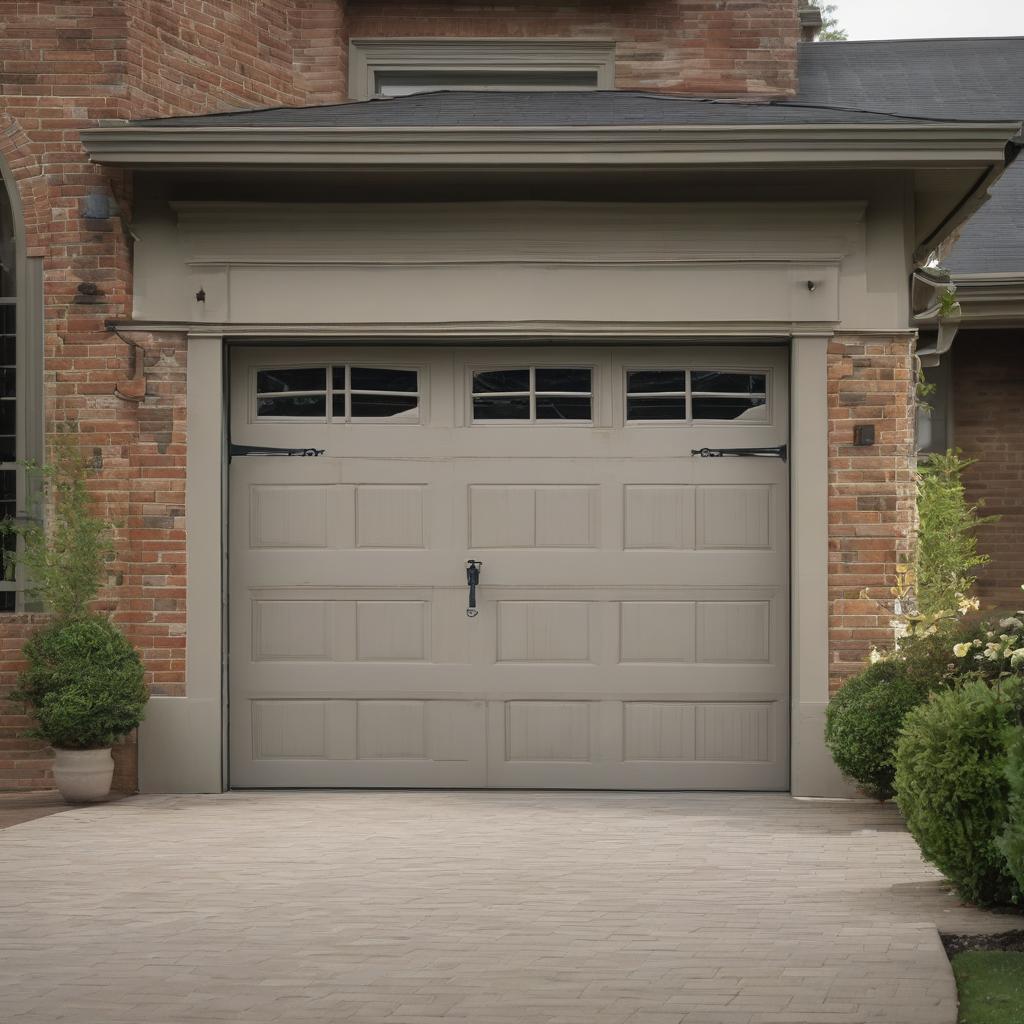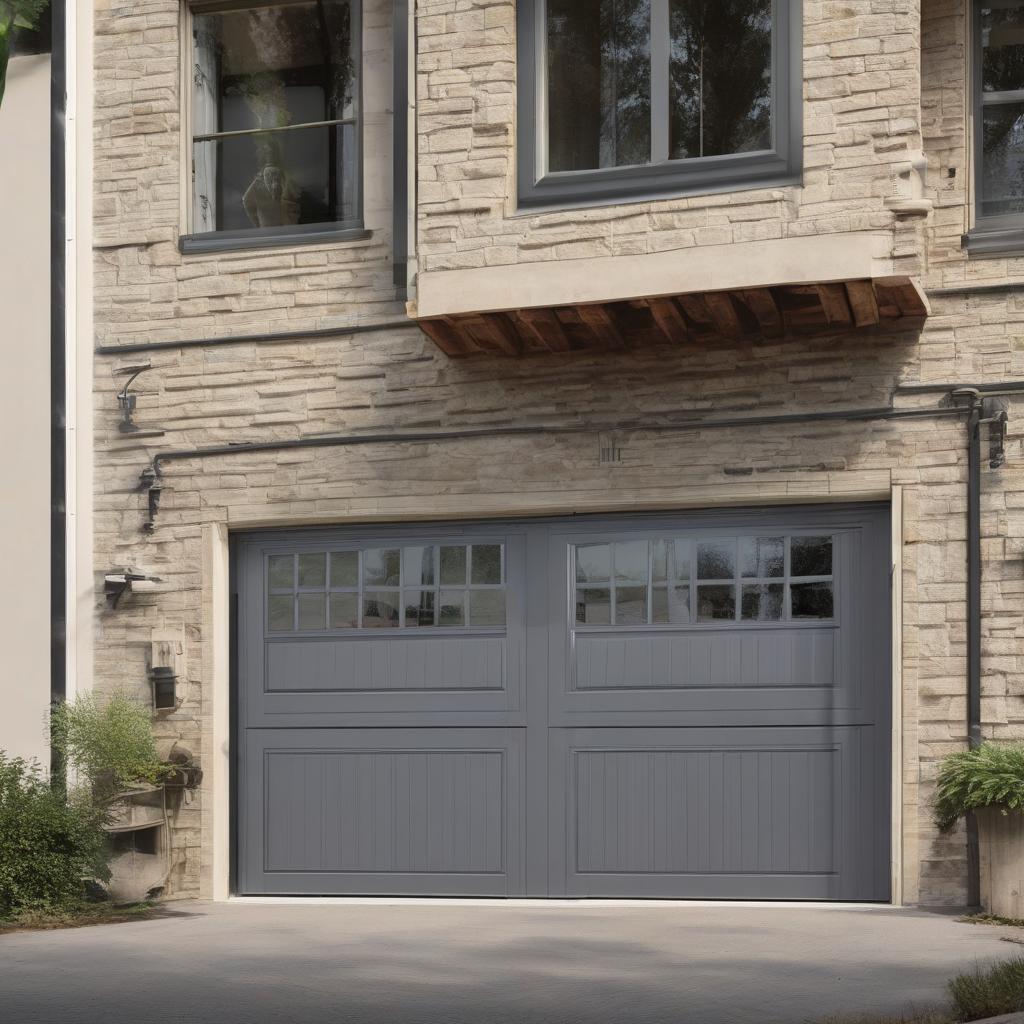
The Evolution of Garage Doors: A Journey Through Time
Garage doors have undergone significant transformations since their inception in the late 19th century. From basic structures meant for practical use, they have evolved into high-tech components of modern homes. This article explores the fascinating history of garage doors, tracing their evolution and showcasing the important innovations that have shaped their development.
The Early Days of Garage Doors
The concept of garage doors dates back to the era of horse-drawn carriages, when people stored their carriages in buildings called carriage houses. These carriage houses had big doors that swung outward on hinges, similar to barn doors. However, these early doors were made of wood and required manual effort to open and close.
The Advent of Automobiles and Garages
With the rise of automobiles in the early 20th century, people needed a place to store their cars. Garages became a necessity, and the term “garage” originated from the French word “garer,” meaning to shelter or protect. Initially, garages were either converted carriage houses or newly built outbuildings with doors that swung outwards.
The Emergence of Overhead Garage Doors
As more cars hit the road, homeowners sought more convenient and secure residential garage doors. Overhead garage doors became the solution, rolling up into the ceiling of the garage. These doors were typically made of wood with multiple panels hinged together, allowing them to bend and roll up smoothly.
C.G. Johnson’s Innovations
In 1921, C.G. Johnson invented the first overhead sectional garage door, revolutionizing the industry. This design featured horizontal panels connected by hinges, enabling the door to move up and down along tracks and slide horizontally along the ceiling. Johnson’s innovation made garage doors more space-efficient and convenient for homeowners.
The Introduction of Electric Garage Door Openers
Johnson’s next groundbreaking invention was the world’s first electric garage door opener in 1926. This device used a motor to lift and lower the door, eliminating manual operation. The electric opener took convenience to a new level, making it a hit among homeowners and paving the way for future advancements in garage door automation.
Advancements in Garage Door Materials
The mid-20th century saw significant developments in garage door materials. While wood remained a popular choice for its aesthetic appeal, new materials like steel and aluminum gained traction.
Steel Garage Doors
Introduced in the 1970s, steel garage doors became popular due to their strength, durability, and energy efficiency. Steel doors could be manufactured with insulation, enhancing their noise reduction properties and design flexibility.
Aluminum Garage Doors
Aluminum garage doors emerged as a lightweight alternative to steel, resistant to rust and corrosion. They were ideal for coastal areas and easier to operate manually due to their lighter weight.
Fiberglass and Vinyl Garage Doors
In the latter part of the 20th century, fiberglass and vinyl garage doors entered the market, offering superior resistance to denting and cracking. These materials provided homeowners with durable, low-maintenance options that could mimic the appearance of wood.
Modern Garage Doors: Smart Technology and Advanced Features
The late 20th and early 21st centuries brought a wave of technological advancements that transformed garage doors into sophisticated, smart devices.
Smart Garage Door Openers
Modern garage door openers are equipped with smart technology, allowing homeowners to control their doors remotely via smartphone apps. These systems provide alerts, status updates, and integration with other smart home devices, offering unparalleled convenience and control.
Advanced Security Features
Modern garage doors feature advanced security features, including rolling code technology, motion sensors, security cameras, and integration with home security systems. These features provide comprehensive protection for homeowners.
Energy Efficiency and Insulation
Insulated garage doors have become increasingly popular, improving the energy efficiency of homes. High-quality weather seals, thermal barriers, and energy-efficient materials contribute to maintaining stable temperatures in garages, reducing energy costs.
Garage Door Styles and Designs
Garage doors come in a variety of styles and designs, catering to different tastes and preferences.
Garage Door Styles
- Traditional
- Modern
- Contemporary
- Carriage House
Garage Doors by Material
Garage doors are made from various materials, each with its unique benefits and characteristics.
Common Garage Door Materials
- Steel
- Aluminum
- Wood
- Fiberglass
- Vinyl
Garage Doors by Thickness
Garage doors vary in thickness, affecting their durability and energy efficiency.
Garage Door Thickness Options
- Single-layer doors
- Multi-layer doors
- Insulated doors
Garage Doors by Insulation R-Value
The insulation R-value measures a garage door’s ability to resist heat transfer.
Insulation R-Value Options
- Low R-value (less insulated)
- Medium R-value (moderately insulated)
- High R-value (well-insulated)
Garage Doors by Finish
Garage doors come with various finishes, affecting their appearance and durability.
Common Garage Door Finishes
- Painted
- Coated
- Embossed
- Textured
Garage Door Openers: The Heart of Modern Garage Doors
Garage door openers have evolved significantly over the years, becoming more sophisticated and convenient.
Types of Garage Door Openers
- Chain-drive openers
- Belt-drive openers
- Screw-drive openers
- Smart openers
In conclusion, garage doors have come a long way since their inception, evolving from basic structures to sophisticated, high-tech components of modern homes. With advancements in materials, designs, and technology, garage doors continue to provide homeowners with convenience, security, and energy efficiency.
Frequently Asked Questions
What is the history of garage doors?
The concept of garage doors dates back to the era of horse-drawn carriages, and they have evolved significantly since their inception in the late 19th century.
Who invented the first overhead sectional garage door?
C.G. Johnson invented the first overhead sectional garage door in 1921, revolutionizing the industry.
What are the different types of garage door materials?
The common garage door materials are steel, aluminum, wood, fiberglass, and vinyl.
What are the benefits of insulated garage doors?
Insulated garage doors improve the energy efficiency of homes, reduce energy costs, and maintain stable temperatures in garages.
What are smart garage door openers?
Smart garage door openers are equipped with technology that allows homeowners to control their doors remotely via smartphone apps.
What are the different types of garage door openers?
The types of garage door openers are chain-drive openers, belt-drive openers, screw-drive openers, and smart openers.
What are the different styles of garage doors?
The different styles of garage doors are traditional, modern, contemporary, and carriage house.
How do I choose the right garage door insulation R-value?
The insulation R-value measures a garage door’s ability to resist heat transfer, and the options range from low R-value to high R-value.
What are the different finishes available for garage doors?
The common garage door finishes are painted, coated, embossed, and textured.
How have garage doors evolved over time?
Garage doors have evolved from basic structures to sophisticated, high-tech components of modern homes, providing convenience, security, and energy efficiency.













